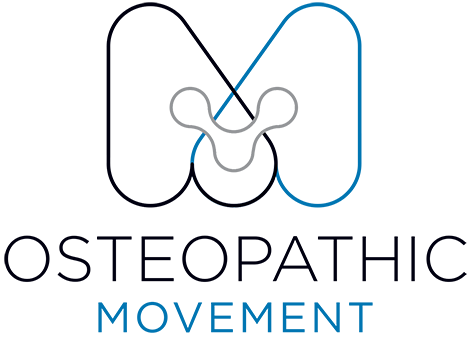Understanding Pain
Understanding Pain
Pain is one of the main reasons people seek medical care. Whether you’re dealing with a recent injury or chronic pain that’s lasted years, understanding what pain is — and why it occurs — is a crucial step toward effective management and long-term relief.
Why Understanding Pain Matters
When it comes to managing pain, education is power. Understanding your diagnosis and why your symptoms exist can help you manage them more effectively, reduce fear, and improve your overall function.
This doesn’t mean that once you understand your pain, you no longer need treatment or rehabilitation — but it’s an important first step.
How pain is explained to you can also shape your recovery. Being told your spine is “weak” or “fragile” can create fear and delay improvement, whereas receiving a clear, practical explanation with a structured plan helps you move forward with confidence.
The Problem with Fear-Avoidance
After an injury, it’s completely normal to feel hesitant about moving — a behaviour known as fear avoidance. You might avoid certain movements or activities out of fear of making things worse.
Sometimes, this is appropriate in the short term. But in many cases, prolonged avoidance reinforces the pain experience. When the brain continues to associate movement with danger, pain can persist even after the injury has healed.
It’s important to remember: hurt doesn’t always mean harm. While pain should always be respected, gently reintroducing movement helps retrain the brain to feel safe again.
What Is Pain?
Pain is your body’s alarm system — designed to alert you to potential threats. The International Association for the Study of Pain (IASP) defines it as:
“An unpleasant sensory and emotional experience associated with, or resembling that associated with, actual or potential tissue damage.”
In simple terms, pain isn’t always a reflection of physical injury. It’s influenced by emotions, beliefs, memories, and context — which is why two people with the same injury can have completely different pain experiences.
Real vs. Potential Tissue Damage
Pain can arise from:
Actual tissue damage, such as torn ligaments, strained muscles, or fractures
Perceived or potential threats, even without physical injury
For example, when you hold your hand near a flame, you feel discomfort before your skin is damaged. Your brain perceives heat as a threat and triggers pain to protect you.
Similarly, if you develop neck or back pain after sitting all day, it doesn’t necessarily mean you’ve injured yourself. It’s often your body’s way of saying, “I’ve been in this position too long — time to move.”
The Brain’s Role in Pain
Pain is always processed in the brain, even when we feel it in the body. When your brain perceives a high threat, it amplifies pain signals to get your attention.
Psychological factors — such as stress, anxiety, or fear — can intensify these signals. Conversely, understanding your condition and feeling supported can help “turn the volume down.”
A classic example of the brain’s involvement is phantom limb pain, where amputees feel pain in a limb that’s no longer there. It demonstrates that pain is an experience generated by the brain, not just by damaged tissue.
The Gate Control Theory
The Gate Control Theory helps explain why non-painful stimuli (like rubbing an injured area) can reduce pain.
Think of your spinal cord as a freeway with toll gates:
Pain signals are “pain cars” travelling toward the brain.
Rubbing the area or applying heat sends “blocker cars” that reach the gates first, partially closing them and reducing how many pain cars get through.
This is why rubbing your elbow after bumping it, or applying a heat pack to sore muscles, often feels soothing — it’s your nervous system’s built-in traffic control.
Sensitisation: When the Alarm Becomes Overactive
Sometimes, the nervous system becomes overprotective. After an injury heals, the brain may still interpret normal sensations as dangerous — a process known as sensitisation.
For example, an ankle may remain tender long after a sprain has resolved. This heightened sensitivity is your body’s attempt to protect a previously injured area, even though it’s now safe.
The goal of treatment is to help retrain this response, restoring confidence and normal movement.
How Osteopathy Can Help
At Osteopathic Movement South Yarra, we take a holistic approach to pain management. Our osteopaths combine manual therapy, education, and exercise to help you better understand and control your pain.
Treatment may include:
Gentle manual techniques to improve mobility and reduce muscle tension
Exercise rehabilitation to restore movement and build confidence
Pain education and reassurance to calm the nervous system and break the fear–pain cycle
By understanding how pain works, you become an active participant in your recovery — not a passive recipient of treatment.
The Takeaway
Pain is a complex but meaningful signal. It’s not just about tissue damage — it’s your body and brain working together to protect you.
With the right understanding, a tailored treatment plan, and the support of an experienced osteopath, you can take control of your pain and return to the activities you enjoy.
Book Your Appointment
If you’re struggling with persistent or recurring pain, our osteopaths can help you understand its cause and guide you toward lasting relief.
• Our South Yarra osteopaths
• Explore our Osteopathic Clinic
• Book your appointment online
Written By Dr. Matthew Keys (B.Sci(Osteo), M.H.S (Osteopathy)) - Associate Osteopath, Osteopathic Movement, South Yarra.
